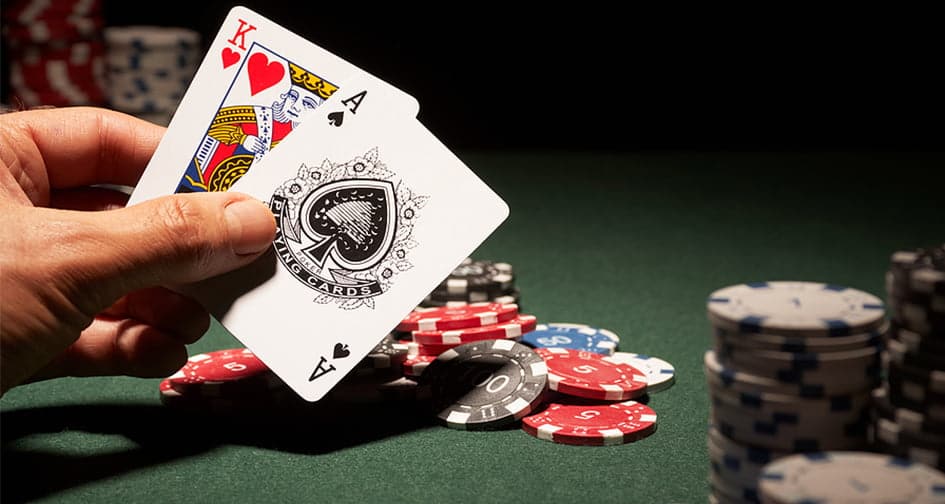Blackjack is one of the most universal gambling games in the world. The game, which is a card game, typically involves a dealer and one or more players. Across the globe, another name for blackjack is Twenty-One. Rather than being between the players, the game is between the individual players and the dealer. You’re most likely going to find blackjack in a casino as it is one of the most common games out there. In this case, the dealer represents the house with at least one deck of 52 cards (it can be more). Just like many other gambling games, Blackjack depends significantly on luck because of its nature. However, many have argued that playing blackjack is a skill that can be developed like every other skill. It is from blackjack that casinos got the inspiration for card games like Pontoon and Spanish 21.

How Blackjack Works
During a game of blackjack, the dealer and all the players on the table are served two cards per round. One out of the two cards will be exposed while the second one will be hidden. Apart from the United States that serves the dealer two cards, many other countries serve them only one. The Queen, King, and Jack have a pip value of 10 while the other cards range from 2 to 9. The term soft is used to refer to an Ace card that has 11 as its value. As long as the hand doesn’t exceed 21, players are allowed to draw additional cards to improve their odds.
As soon as the players have finished the hands without a blackjack or a bust the dealer gets his turn and reveals all the cards on the table. If the total points of the cards are up to 17, the dealer remains. A player gets a blackjack when he or she is served a card with a value of 10 along with an Ace. If the dealer doesn’t have the same card, the player wins and gets all the money wagered. Some casinos even give the player a bonus after they get the blackjack. A player also wins when their final value is higher than the final value of the dealer but is not higher than 21. Any player who has a total value that is higher than 21 is out of the game. No one wins, if the players and the dealer get a blackjack at the same time. No one wins if there is a push. A push is a term used when a player and a dealer gets the same value.

Originally, blackjack depended solely on luck. In the 1960s, however, players invented methods that allowed them to push the odds in their favor against the other players and against the house. One of the most popular methods of outsmarting the house and the other players is by counting cards. Counting cards allow you to determine if the hand that is to be dealt will give you a probable advantage against everyone else on the table. Counting cards isn’t legal but it isn’t illegal either and casinos frown at it because it gives players an unfair advantage. If you want to use this strategy, you need to be careful. Most big casinos do things that make it extremely difficult for players to take advantage of counting cards. So, you need to be smart and agile if you’re going to succeed using this strategy.
How To Count Cards In Blackjack
To count cards, you need to tag cards in the positive and negative. When you do, you can place your wager accordingly. When the count is positive, you increase your wager. When it is negative, you should reduce your wager. For every card that is ranked between 2 and 6, you should tag (+1). All the cards that are ranked between 10-A are tagged (- 1). You know its time to increase your wager when the undealt cards have cards with larger values compared to the dealt cards as long as the running count is positive. On the other hand, if the running count is negative after a round is completed, and the cards that haven’t been dealt by the dealer have more of small cards, the wise thing to do would be to decrease the size of the wager.
Card counting is a mathematically proven way to increase your odds while playing blackjack. All you have to do is learn the strategy and apply it when you’re playing. Counting cards is based on the logic that dealers benefit more from low-value cards while players benefit more from high-value cards. As stated earlier, the low-value cards are cards that fall between two and six while the high-value cards include cards with 10 points, Aces and picture cases. Keep in mind that cards that have 7, 8 and 9 as their values are neither high value or low value. They are simply neutral. So, they will not give you or the dealer any competitive advantage but they will not cost you anything significant either.
For each game, the number of high cards is equivalent to the number of low cards. The dealer shuffles the cards in front of everyone to make sure that everything is random. Depending on the cards that are dealt during the first round, the ratio of the remaining cards will most likely change. You can determine how the ratio changed by taking note of the cards that were dealt. If most of the cards dealt during the first round are low-value cards, you should expect high-value cards in the following round and vice versa. Your chances of getting the blackjack will be higher when there is a higher concentration of high-value cards left after the first or first few rounds. So, this would be a good time to increase your wager.
To count cards, you need to be good at math and you need to have a good memory also. If you’re not good at either of these things, the best way to learn card counting is to pay an expert to give you face to face lessons on counting cards. If you’re not interested in paying an individual for help, consider using online interactive software to learn how to count cards. After you have studied the method, find the nearest casino and test it out.
Other Tips For Boosting Your Chances in Blackjack
- Don’t go for large tables if you have a small bankroll.
- Choose tables that have double down options available and when the dealer has a six, double down with your ace against it.
- Split your Eights and Aces.
- Don’t draw too much attention to yourself if you’re counting cards. To do this, you need to make sure that you win moderately. When you win too frequently during the same game, you will draw attention to yourself and you may be kicked out.
- Don’t use external card counting devices. Make sure you avoid using external card count devices if you want to keep playing.
In conclusion, success in blackjack is a combination of skill and luck. Skill will take you a long way during the game and luck will seal the deal. So, you can start by learning the basic principles of blackjack. After this, learn how to count cards without using any external device. When you start playing blackjack for the first time, make sure you stick to tables with smaller wagering requirements. You shouldn’t play in large tables until after you have mastered the game. Otherwise, you may lose a lot of money.




